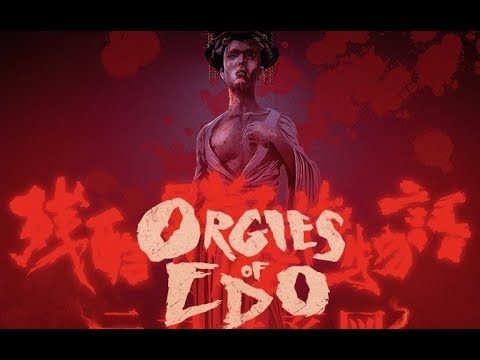Available on Blu-ray Mon 19 Nov 2018
The work of prolific director Teruo Ishii has remained largely unknown to Western audiences. Even during the explosion of interest in Japanese cinema in the late 90’s, thanks to the likes of Audition and Ring, that saw reevaluation of, and new appreciation for, the works of Seijun Suzuki and Kinji Fukasaku, Ishii’s name was rarely mentioned. Perhaps this is down to his association with the ero-guro (erotic-grotesque) sub-genre, a stylishly sleazy brand of trash that saw its peak in the late 60’s and 70’s. While contemporaries Suzuki and Fukasaku brought a Japanese spin to recognisable gangster noir tropes in works like Branded to Kill and Battles Without Honor or Humanity, one was easily digestible to mildly adventurous film-goers, Ishii’s work is something else entirely. Hindsight suggests the Ishii experience is roughly analogous to the style and excesses of Italian gialli, or the sexualised arthouse provocation of Walerian Borowczyk. Indeed, Orgies of Edo is an anthology film that feels like an even more flamboyant and perverse version of Borowczyk’s Immoral Tales, a lavish and decadent period piece that serves a fine introduction to the themes that preoccupied Ishii.
Each of the three tales is set in the opulent Gentoku era of the Edo period (1688-1704), and each centres around a person doomed by a twisted love or desire. In the first, a woman is tricked into life as a prostitute by an unscrupulous Yakuza, yet continues to love him with demented devotion. In the second, the daughter of a rich merchant with very particular sexual tastes taunts an infatuated man with her proclivities. The final story takes a Sadean turn and focuses on a vicious and cruel lord who may have found an ideal masochistic match, but whose world is destroyed by a shocking secret.
Ishii loves to contrast his rich aesthetic sense with his propensity for extremity. His style makes use of heightened colours to create a lush world not unlike that Zhang Yimou would later employ in films like House of Flying Daggers. It’s primarily as a visual experience that Orgies of Edo leaves its mark like the numerous whips and flogs utilised by its characters. The second and third stories especially are memorable for chaotic group scenes with numerous women in, and frequently disrobing from, eye-popping costumes. It is undoubtedly pure sexploitation; albeit of an artistic and technical level far beyond that of the likes of Ilsa: She Wolf of the SS and other notorious trash. The blood flows copiously and is still an occasionally shocking experience fifty years after its production, but it is undoubtedly the work of a talented filmmaker.
It is very difficult to defend with modern eyes some of the film’s more troubling content, such as the depiction of a black man as an example of perverse tastes, but as with classic giallo films, appreciation has to be often accompanied by a parallel acknowledgement that some of the material is not entirely progressive. With that in mind, there’s much to enjoy here, both beauty and baseness in equal supply; and for those with their curiosity piqued, Arrow also recently released another of Ishii’s films Horrors of Malformed Men.
